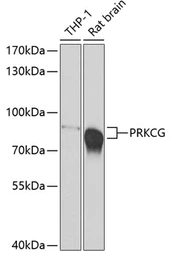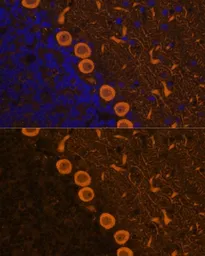PKC gamma antibody
Cat. No. GTX55750
Cat. No. GTX55750
-
HostRabbit
-
ClonalityPolyclonal
-
IsotypeIgG
-
ApplicationsWB IHC-P
-
ReactivityHuman, Rat

